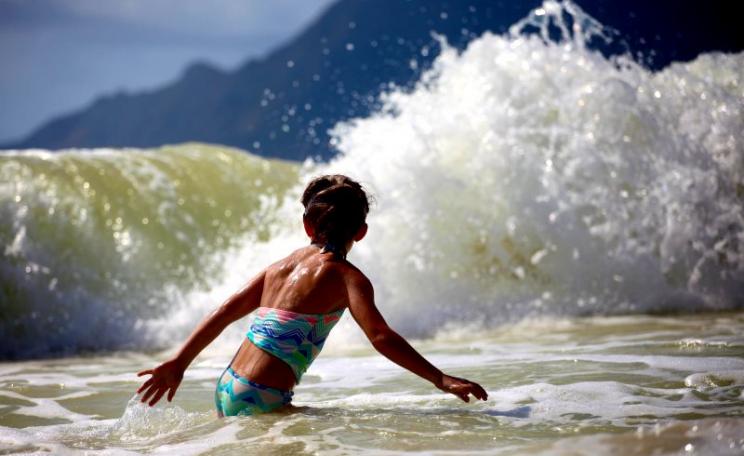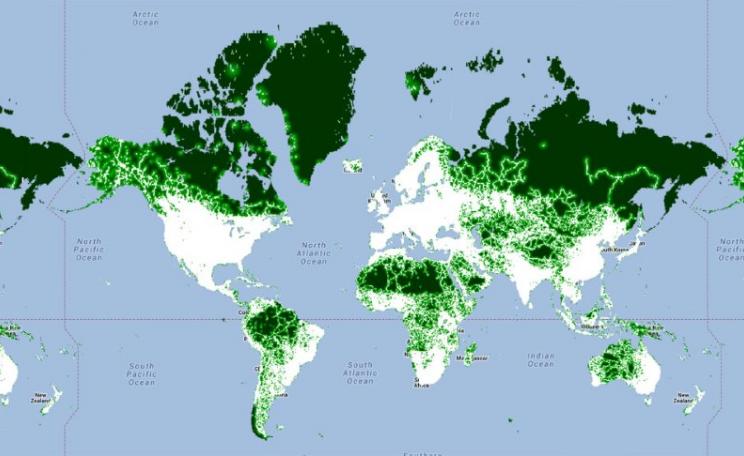This shows that there are internal responses within the climate system that can make glaciers grow and shrink on very short timescales. They're really dynamic systems, which we have not had much evidence for prior to this.
The glaciers of Greenland are retreating two to three times faster now than at any time since the last Ice Age ended 9,500 years ago, according to new research.
The news comes as indigenous peoples from the northern polar region staged an Arctic Day at the COP21 climate change summit in Paris.
Leaders of Greenland peoples, the Nunavut region of Canada and the Inuit Circumpolar Council appealed to the governments of the world to unite to dramatically reduce greenhouse gas emissions and keep global warming to between 1.5C and 2C.
That is because the Arctic is now warming faster than almost anywhere else on Earth, and both human settlements and natural ecosystems are vulnerable.
That the Greenland glaciers are in retreat is itself not news. Satellite data and measurements on the ground have repeatedly confirmed the retreat of the glaciers, the loss of ice and the acceleration of flow. The Jakobshavn Isbrae glacier has even reached a speed of 17 kilometres a year.
Sediment cores
But US scientists report in Climate of the Past journal that the present rate of loss is without precedent.
They analysed sediment cores from a lake bed fed by two Greenland glaciers and built up a record reaching back nearly 10,000 years, charting the advance and retreat of the ice in response to natural cycles. And they found evidence of climate change triggered by the human combustion of fossil fuels imposed upon the natural pattern.
"Two things are happening", says one of the report's authors, William D'Andrea, a paleoclimatologist at Columbia University's Lamont-Doherty Earth Observatory.
"One is you have a very gradual decrease in the amount of sunlight hitting high latitudes in the summer. If that were the only thing happening, we would expect these glaciers to very slowly be creeping forward, forward, forward.
"But then we come along and start burning fossil fuels and adding carbon dioxide to the atmosphere, and glaciers that would still be growing start to melt back because summer temperatures are warmer."
The evidence lies in the erosion rates revealed by the lake silts. Colder climates mean more ice, which means heavier glaciers, which then grind and erode more rock. Cores of sediment preserve the annual record of seasonal change, and radiocarbon dating techniques can provide a calendar of melting and freezing periods.
The record reveals that erosion decreased 8,500 years ago, increased again, and then around 8,000 years ago the glaciers began almost to waste away. There was very little evidence of erosion, and the lake silt incorporated evidence that plants once bloomed around the lake.
Around 4,000 years ago, the glaciers grew again, and - with intervals of retreat - continued to grow until 100 years ago.
Pattern of retreat
Although the evidence comes from a small area confined to the southeastern part of Greenland, it remains a guide to the bigger picture. The same pattern of advance and retreat is matched by evidence from ocean sediments and cores of ice from Greenland and Baffin Island.
"This shows that there are internal responses within the climate system that can make glaciers grow and shrink on very short timescales", Dr D'Andrea says. "They're really dynamic systems, which we have not had much evidence for prior to this."
Greenland's minister of industry, labour, trade and foreign affairs, Vittus Qujaukitsoq, one the Arctic voices appealing for strong and effective action in Paris, said: "Greenland has an important responsibility in promoting international climate research.
"Greenlandic climate research combines international cutting-edge research with an Arctic human dimension. Our joint Inuit voice and our traditional know-how from across the Arctic should be heard and included in international policy-making."
Tim Radford writes for Climate News Network.







